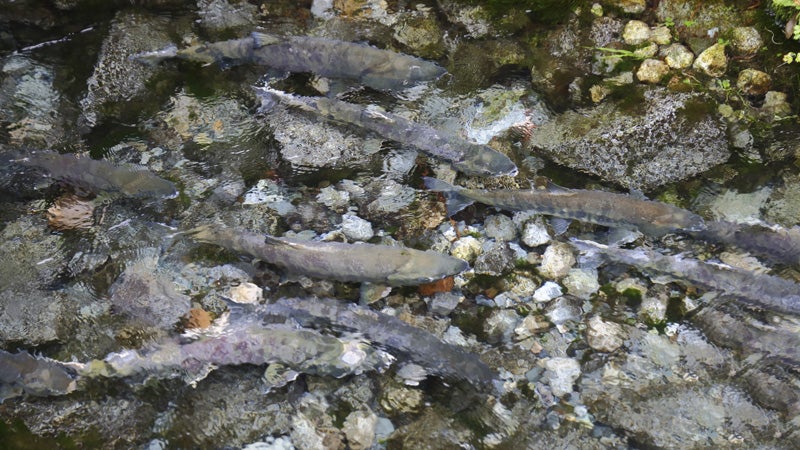What do you call a procession of tanker trucks carrying 12 million Chinook salmon from their Sacramento River habitats to the ocean? There’s no punchline here; this is just another result of California’s severe drought.
According to , state and federal officials have agreed to relocate hatchery-raised salmon because the drought could make the Sacramento River and its tributaries uninhabitable for the fish.
Scientists fear that poor conditions could harm salmon populations in a number of ways. As water levels dip, shrunken habitats and shallower waters could shrink the salmons’ food supply and make them easier targets for predators. Plus, warmer waters can prove lethal for salmon.
“The conditions may be so poor as to produce unacceptable levels of mortality for the out-migrating juveniles,” said Bob Clarke, fisheries program supervisor at the U.S. Fish and Wildlife Service.
That’s why officials from the agency’s Coleman National Fish Hatchery are fighting back. The hatchery rests on Battle Creek, a tributary of the Sacramento River, and is California’s largest, producing 12 million fall-run salmon. Scientists usually release salmon from Coleman—which itself was created to mitigate habitat loss caused by Shasta Dam—in April or May, but this year they’re altering the plan.
Officials will save millions of salmon by transporting them to the ocean, but not without a cost to the state. Releasing salmon into rivers rather than oceans trains the fish to think of the river as their “home” and aids migration back to the river for spawning.
The jury’s still out on how this artificial migration to the ocean will influence migratory patterns in three to four years. If the salmon fail to return in their usual numbers, it could have a sizable impact on the Californian economy. Salmon from the Sacramento River network account for much of the wild-caught salmon available in California’s stores and restaurants and also support the state’s sportfishing industry. At the end of the day, fall-run Chinook salmon constitute billions of dollars for the state economy.
The salmon should take care, however, when returning to California rivers. Word is that pot farms also pose a serious threat to the fish.


